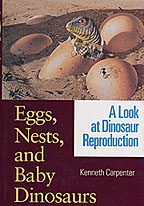I’ve been working on a brand new historical/evolutionary review post all day, and I’m sad to say it’s not yet completed. I was expecting a finished product by now, so as a substitute, here’s the first few paragraphs of the post that should give you some clues as to what I’ll be covering. I haven’t gone back to fully edit yet so please excuse any errors. I hope to have the whole thing finished tomorrow (it’s currently a little more than halfway done);

One of Charles R. Knight’s interpretations of Eohippus
When the name of O.C. Marsh is invoked, it is often to tell of his participation in the great “Bone Wars” of the late 19th century, sparring with fellow osteophile E.D. Cope in the pages of the New York Herald. Twisted tales of deceit and sabotage were promulgated in the sensationalist paper, and while both men helped to bring about an American revolution in vertebrate paleontology, the scars of their bitter squabbling have yet to fully heal. Such scientific in-fighting might seem worthy only of a historical footnote or an introduction to the stereotyped image of “smash-and-grab” paleontology of the time which is almost romantically referred to, but the truth of the matter goes far deeper than the public beard-pulling that is so often remembered.
The tiff between Cope and Marsh is strange in that is seems to exist in the popular literature out of time, removed from the context in which it had originally existed. Charles Darwin had published his earth-shaking work On the Origin of Species by Natural Selection a scant 31 years before the ink almost ran red with rage on the pages of the Herald, the question of evolution being of far more importance in the public consciousness than dinosaurs. The full establishment of the dinosaur as a cultural (and dare I say, mythical) creature in the mind of the American public only seemed to take place after the Bone Wars, the appointment of Henry Fairfield Osborn to the American Museum of Natural History (specifically hired to establish a vertebrate paleontology program) and the popular reports of the dinosaur that carried the namesake of Andrew Carnegie, Diplodocus carnegei, being the more immediate beginnings of the public’s love affair with the extinct creatures. Before Brontosaurus and Tyrannosaurus became household names, the public eye was focused upon horses and birds.
The latter half of the 19th century was a stirring time for biological science, especially involving the new areas of vertebrate paleontology and evolution, the august authorities in England keeping on eye on the up-and-comers starting their own careers in the states. Early on, paleontologist E.D. Cope impressed T.H. Huxley with his 1866 discovery of Laelaps aquilunguis, but in a paleontological clean-sweep Marsh would eventually have his name attached to Cope’s dinosaur and the admiration of not only T.H. Huxley, but Charles Darwin himself. As for the renaming of Laelaps, Marsh found that the name was already taken by a genus of mite, renaming the New Jersey greensand dinosaur Dryptosaurus in 1877 (although Cope, throughout the rest of his career, called the dinosaur Laelaps). It would take more than some taxonomic shuffling to impress the eminent British anatomists and paleontologists, however, and Marsh’s ticket into Huxley’s good graces came in the form of toothed Cretaceous birds like Hesperornis (Marsh, 1872).














Actually, Eohippus is once again valid for at least one species of basal equoid. This comes from recent work by David Froelich (abstract here) that shows that Hyacotherium in the late 20th Century sense is a paraphyletic series relative to palaeotheres and derived equids.
Thank you for the update, Dr. Holtz! I spent so much time going through the old literature yesterday that I didn’t have a chance to get into the current state of things, so thank you for the reference (I’ll correct things accordingly).
Now that the entire post is up above, I am wondering how many of the images are free of copyright (or you can obtain it) in order to be able to republish in a … er … book?
Many of the images I used are from papers from before 1923 or the publishers are no longer around, allow I’m not sure if the AMNH has special rules. I’m visiting again soon so maybe I’ll drop by the library and ask. I’ll try to get in touch with Bruce MacFadden as well, and if everything else falls through I’ll draw up a similar version (which may be easier overall in the end). That’s all contingent, of course, on whether said post makes the cut for this hypothetical book, hah.
Heck, wait another year or so and then publish your own “Best of Laelaps” blook – I’d buy a dozen copies to give as presents.
Haha, sounds like a plan. I hope to have a book written within the next few months (my wife said I should stop blogging and just spend that time writing, although I don’t think that’s going to happen), but if not maybe I will go ahead with a blook. If I do, though, I might come a-knockin’ for a foreward by a certain North Carolina super blogger…
Deal.